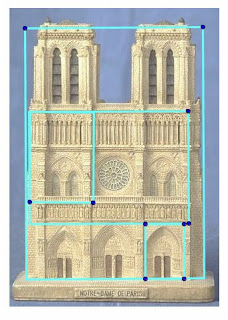Cuando Domingo Cavallo realiza comentarios sobre la coyuntura económica, no pasan desapercibidos.
El exministro de Economía tiene el ojo puesto en la coyuntura y ahora se dedicó a analizar el desembolso fuerte de reservas que el Banco Central (BCRA) tuvo que llevar adelante el último mes frente a presiones alcistas en el dólar.
Frente a los más de u$s4.000 millones en intervenciones aplicadas por el organismo monetario, Cavallo consideró que la utilización de reservas por parte la entidad estuvo perfectamente justificada. Pero apuntó a ciertos problemas de coordinación y separación de roles dentro del equipo económico de Cambiemos.
"Los sobresaltos cambiarios de la semana pasada se debieron más a la confusión que genera entre los operadores financieros la aparente puja entre el Banco Centraly la Jefatura de Gabinete", empezó el último artículo del ex ministro en su blog personal.
El economista explicó que la venta de reservas por parte del BCRA fue un "resultado de la decisión de quienes habían traído dólares a través de lo que se denomina el carry-trade", y que la entrada de esas mismas reservas en su momento habían causado una baja artificial en el precio del dólar, que no se vio reflejada en la tasa de inflación.
Respecto a la decisión del Central de aumentar la tasa de referencia a 30,25% en el medio de la rueda del viernes, Cavallo consideró que la suba de tasa podía ser "leída por los mercados como un regreso a la práctica de inducir carry-trade para conseguir entrada de dólares prestados al activo del Banco Central".
Otros puntos remarcados por Cavallo, según consigna Infobae, también se refieren a las metas de inflación y la relación de financiamiento del Banco Central al Tesoro (es decir, el Gobierno).
A continuación, algunos de los principales puntos del análisis de Cavallo:
1. "No hay razones para la alarma. Ni para el gobierno ni para la gente. Todavía es perfectamente posible lograr que se retome la tendencia a la baja de la tasa de inflación sin que se interrumpa el proceso de crecimiento de la economía, que, aunque tenue, siempre es mejor que una recesión".
2. "El Gobierno tiene que dejar de hablar de metas cuantitativas de inflación, centrar su esfuerzo en controlar el crecimiento del gasto público primario, en términos nominales, no como porcentaje del PBI".
3. "Se ha hecho de la independencia del Banco Central y del modelo de política monetaria, que persigue metas de inflación, una suerte de piedra filosofal, mientras hay indicios de que el equipo económico razona con otros esquemas teóricos, que no se sabe bien cuáles son".
4. "En su tarea de coordinación entre el Banco Central y el Ministerio de Finanzas, sólo tienen que decidir el monto del financiamiento monetario que el Banco Centralaporta al Tesoro y la porción del déficit que se financia con deuda".
5. "Si, además, quisiera hacer operaciones de mercado abierto con letras y bonos del Tesoro, tiene antes que conseguir que el Tesoro le canjee parte de las letras intransferibles que tiene en su activo por un conjunto de letras y bonos idénticos a los que ya cotizan en los mercados".
6. "Operando así, y luego de que haya quedado decidido qué parte del déficit fiscal es financiada por el Banco Central, se podrá hablar de independencia del Banco Central como realidad operativa más que como eslogan ideológico".
7. "Los dólares que se están yendo son los que nunca debieron entrar. El Gobierno no debe preocuparse en retenerlos y no debe buscar aumentar reservas con dólares del carry-trade".
8. "El curso futuro de la inflación va a estar determinado fundamentalmente por el ritmo al que aumente el gasto primario del Gobierno en términos nominales, el ritmo al que aumente el precio del dólar y el ritmo al que aumenten los salarios".
9. "Más allá de cuál sea el ancla nominal, lo cierto es que, si hay déficit fiscal, habrá sobrevaluación del peso por un período que puede llegar a ser bastante largo. Por consiguiente, se percibirá en la economía un atraso cambiario preocupante para exportadores".
10. "Es equivocado sostener que debe preferirse el manejo de la tasa de interés antes que el tipo de cambio nominal como vehículo de la política monetaria. Lo más razonable es manejarse con alguna combinación de ambas".

